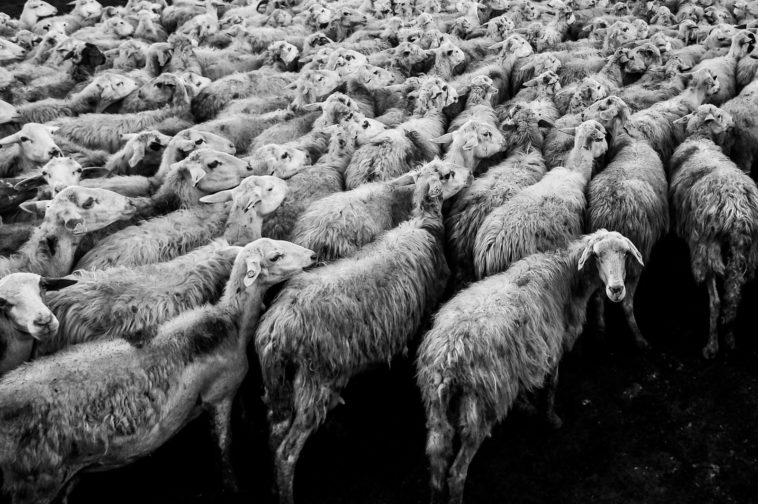One Sunday morning in Los Angeles, I went to a small drug store to get a pocket-size note pad. It was around 10 a.m. when I entered the place and found my way to the stationery aisle. As I moved around other shoppers while looking for the note pads, I was bumped into by shoppers making their way through the aisle or jostling for position to eyeball the goods. It was the late 1990s, and the citizens were so packed into the municipality’s 502 square miles that not even the paper goods aisle of a drug store was free from the clog. The cities ringing or entirely surrounded by the giant Metropolis in the 4,700 square miles of Los Angeles County only compounded the problem.
Some people think that the population explosion is a metropolitan problem. I recently read comments in a thread about population growth that claimed that there is lots of open space on Planet Earth where we could spread out the inhabitants. One commenter wisely pointed out that if we put people everywhere, there is not place left for farms, ranches, wild animals and resources. But this idea that all we have to do is “pave paradise and put up a parking lot” underlies much of the foolish notion that we control the environment, and not the other way around.
The population crisis is a two-pronged calamity: There are more people than we can feed, house, clothe, and provide medical care for; and, as the population grows, automation dwindles the number of jobs.
We spoke in this space a while back about Artificial Intelligence driving machinery to do what it used to take hundreds or thousands of people to do. There was an interesting piece on PBS claiming that when AI replaces workers in one sector, the jobs simply shift to the sector that builds the software and hardware and the machinery now run by the Cyber Genius. Of course, that is only until AI is designed to perform these functions as well.
If industry was run by forward thinking people, there wouldn’t even be that lag, with all facets of the new mechanical order handled by Artificial Intelligence. Too many companies are run by numbers crunchers too busy reading spreadsheets to look up and see the near future, and then okay an expenditure (the devil you say!) for action even farther down the line.
In 1900, the world had less than two billion people. Today’s population is nearing eight billion. The formula for population growth is factored by the number of people being born versus the number of people who die. According to ourworldindata.org, 140 million Earthers were born in 2015, while only 55 million died. Their projections show that birth rates will outstrip deaths until about 2080, and then population numbers will even out. That presumes that medical ability to prolong life and prevent fetal mortality will remain unchanged from today. Or conversely that disease, famine and war won’t change the dynamic.
Another projection is that the birth rate will stay at 140M per anum through the 2050s, while the death rate will slowly rise from the current estimate of 60M per year to around 99M during that same span. Forgive me for trying to do math, but my calculations put the total world population 35 years from now at 10 billion.
Let us darken the picture even more with the possibility of natural catastrophic events that could wipe out, temporarily or definitively, crops and/or the ability to transport foods to economically poor but population dense parts of the world. Clean, fresh water is not as plentiful or easy to obtain in some highly populated regions of Terra Firma as in others. Desalinization is an expensive and limited way to provide the thing that none of us can survive without for more than three days.
Governments with large populations have different solutions to whatever problems are being caused by the situation today. The most notable is China, which in 1980 imposed the one-child-per-family rule to rein in the population, which currently is more than 1.4 billion. This regulation was recently relaxed to two children in 2017 and this year to three children. The new rules reflect a shrinking population as older Chinese died off and fewer people were available to maintain the workforce.
Population giant India tried to implement measures as far back as the early 1970s, allowing abortion, promoting birth control, raising the legal age for marriage, and so on. These largely voluntary measures didn’t work. According to Jonathan Abbamonte, writing for the Population Research Institute, India turned to forced sterilization camps, where tubal ligations are performed on poor women who are not fully informed of the long-term consequences. He asserts that a similar practice took place in the late 1990s in Peru, mostly on indigenous women.
Government imposed restraints on fertility and reproduction are not acceptable on any plane. What must be done to sustain the population growth in the next 80 years is a better distribution of basic resources and more thoughtful environmental practices. Technological advances make it possible to spread the workforce to many less populated areas than the urban and industrial centers that have ganged people together.
I intend to be around for most of this century, and it will be interesting to see this play out. In the meantime, move over, buddy. Don’t crowd me.






 and
and